Photographs throughout Ad:
Offered for auction from a recent estate sale is a Wonderful and Beautiful Early and Quite Rare dish as defined below
GLAZED SMOOTH EARTHENWARE (LATER TRADEMARK) (PINK/RED/WHITE DESIGN - FLORAL / VALLEY / STREAM / BRIDGE / CASTLE ETC SCENE TRANSFERWARE ) UNDER GLAZE - WOOD & SONS TRADEMARK AS NOTED ON BACK BEGAN IN 1917 AND I BELIEVE EXISTED THROUGH THE 1930’S AND WITH THIS TRADEMARK LATE 1940’S OR EARLY 1950.
- This Beautiful early Enoch Wood’s Woodland pattern English Scenery, Wood & Sons (WOODLAND) Round Vegetable Bowl measure 9 1/4 inches in width and 3 inches in height. On the bottom of the “WOODLAND” Round Vegetable Dish it is marked with the trademark of - Wood & Sons - “WOODLAND” Wood & Sons, Burslem, England as photo shows. Also on the Round Vegetable Bowl the trademark includes the following. Around the Lion on the left is the following (RALPH 1750), over the middle (MOSES 1751) ( and on the right side of the Lion (ENOCH 1784). These dates do not apply to the manufacture of this dish only history of the Woods pottery business. Before baking and glazing the Trademark was placed on the Pitcher. For dating the Early Wood & Sons Vegetable Bowl and interesting statement is included under the Woods & Sons trademark (POTTERS OF OVER 200 YEARS) This statement was added in the late 1940’s and early 1950’s
This wonderful early Late 1940’s early 1950’s Wood & Sons - WOODLAND Scenery is without chips, crack or crazing. Also noted on the back on the Rimed Soup Bowls on the right and left side is a small spot which sometimes is discolored which appears to have been where a device was placed to hold the Bowl when possibly glazing. On very bottom of bowl on bottom rim a few dark spot which came from storage most likely as photo will show. They appear to most likely never been used, if used very carefully and lightly considering their age is in the early 1950’s as noted above period as trademark shows.
Below I have added information on the Enoch Woods - Wood & Sons Earthenware Pottery Factory, Photographs and the history of Crazing on pottery as noted in my ad.
As photos show I would consider these Wood & Sons Enoch Wood’s English Scenery Round Vegetable Bowl to be in excellent condition. Photos have been taken in direct sunlight out door, indoors on different backgrounds to show this Wonderful Woodland Round Vegetable Dish in various backgrounds. Please keep in mind that this item is close to 70 or so years old and may exhibit minor ware as I have tried to define above. Please view photos for condition.
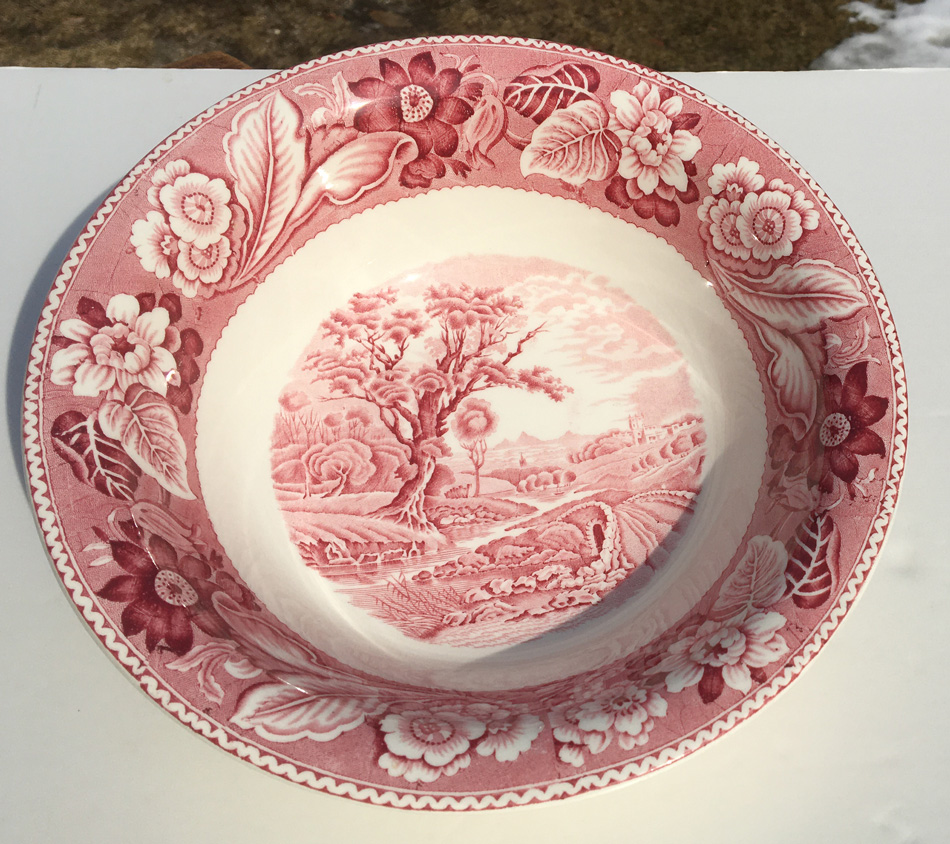
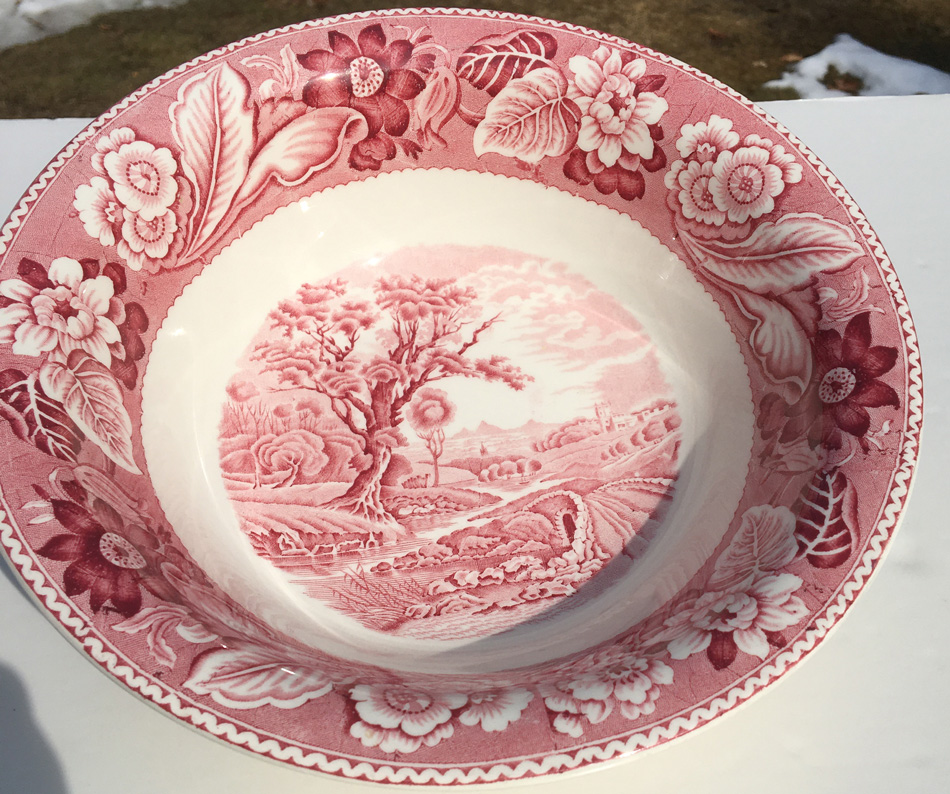
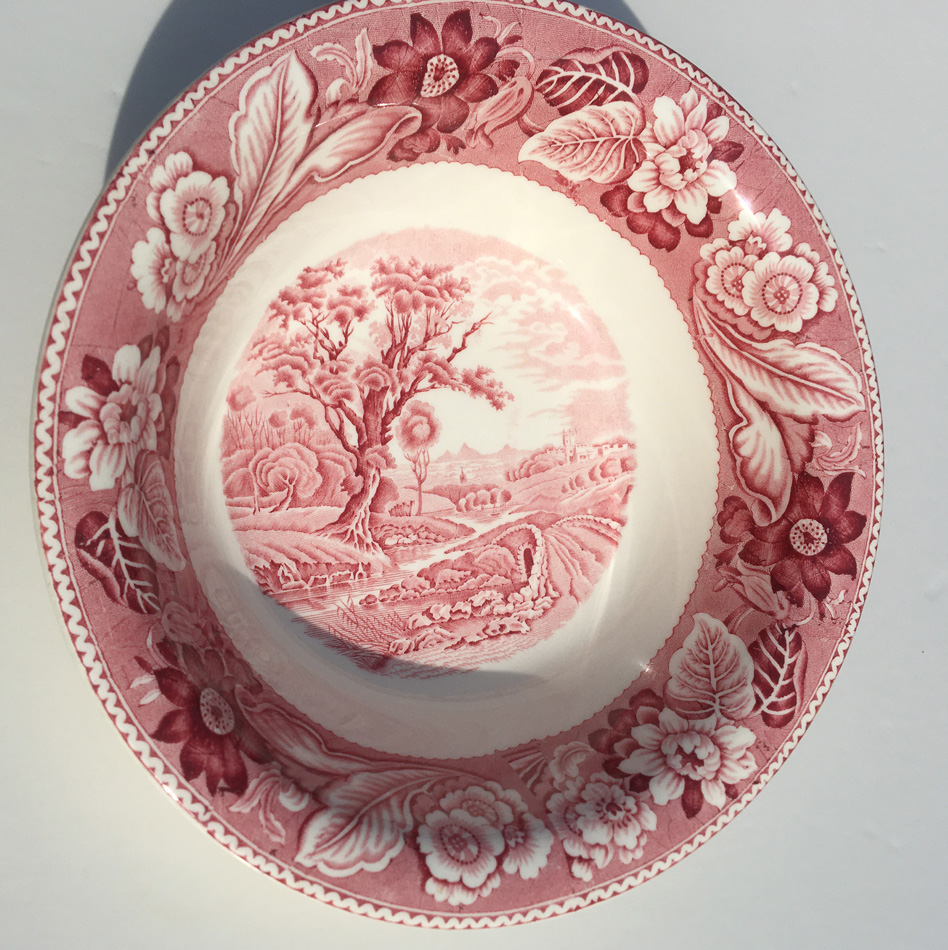
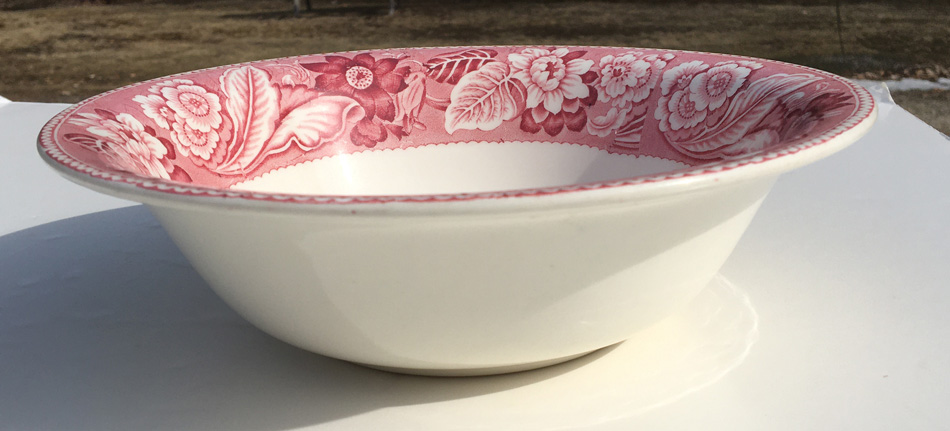
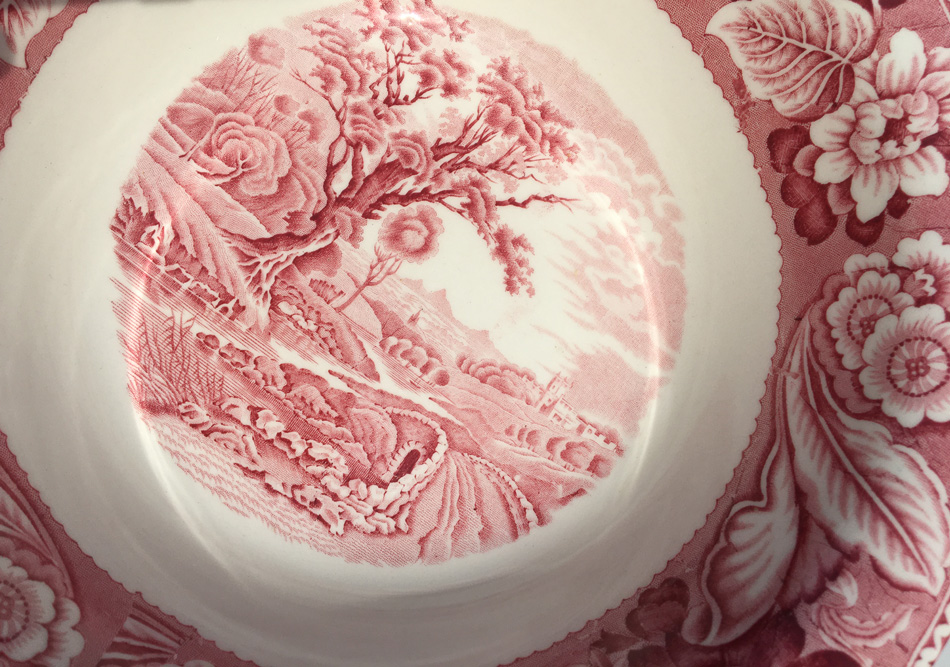
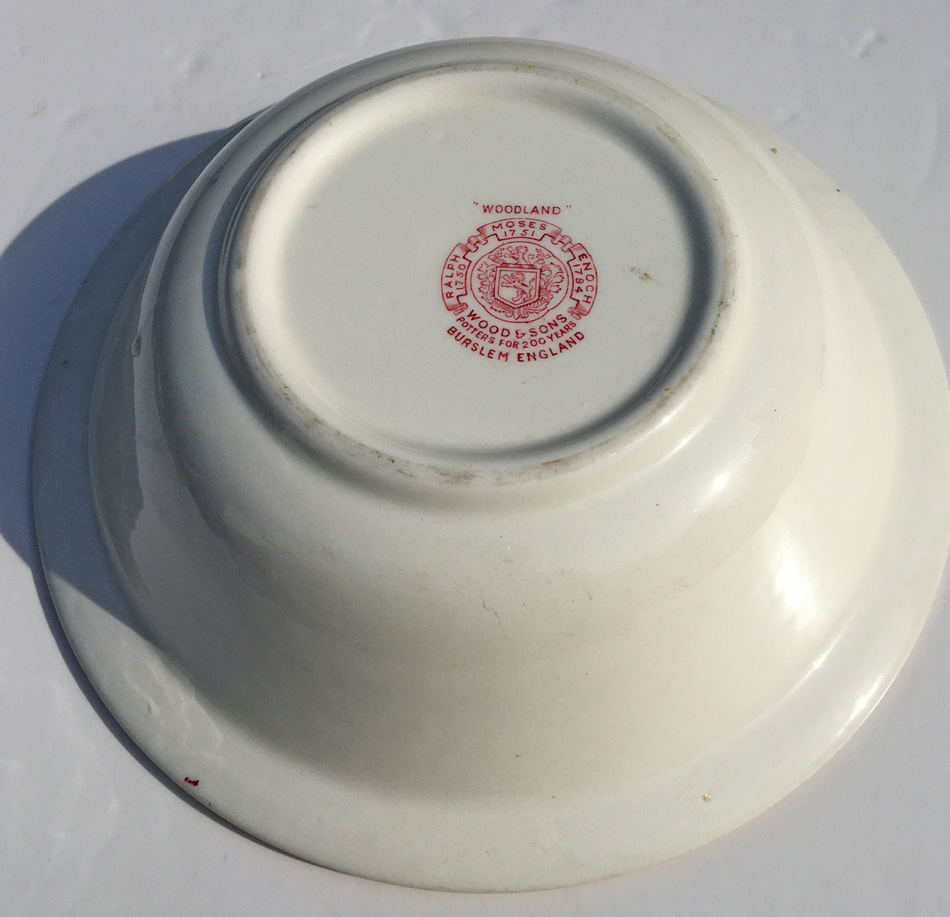
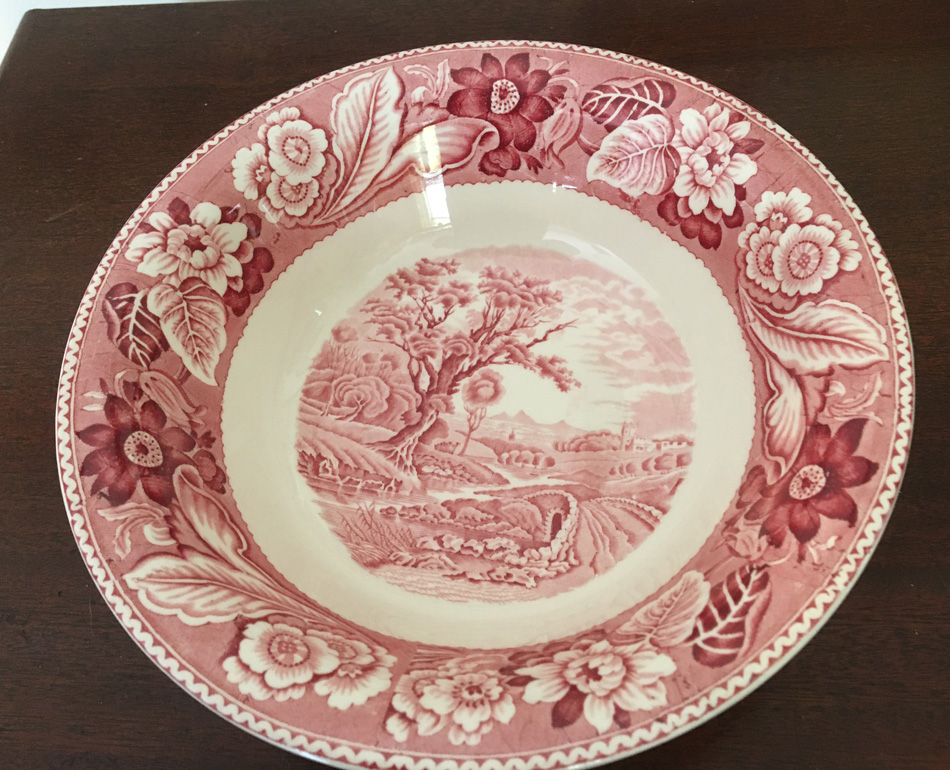
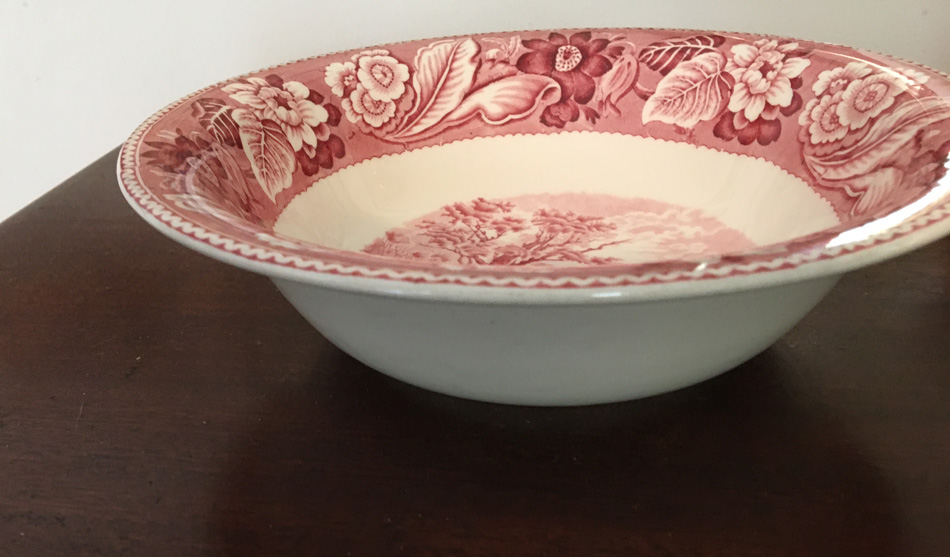
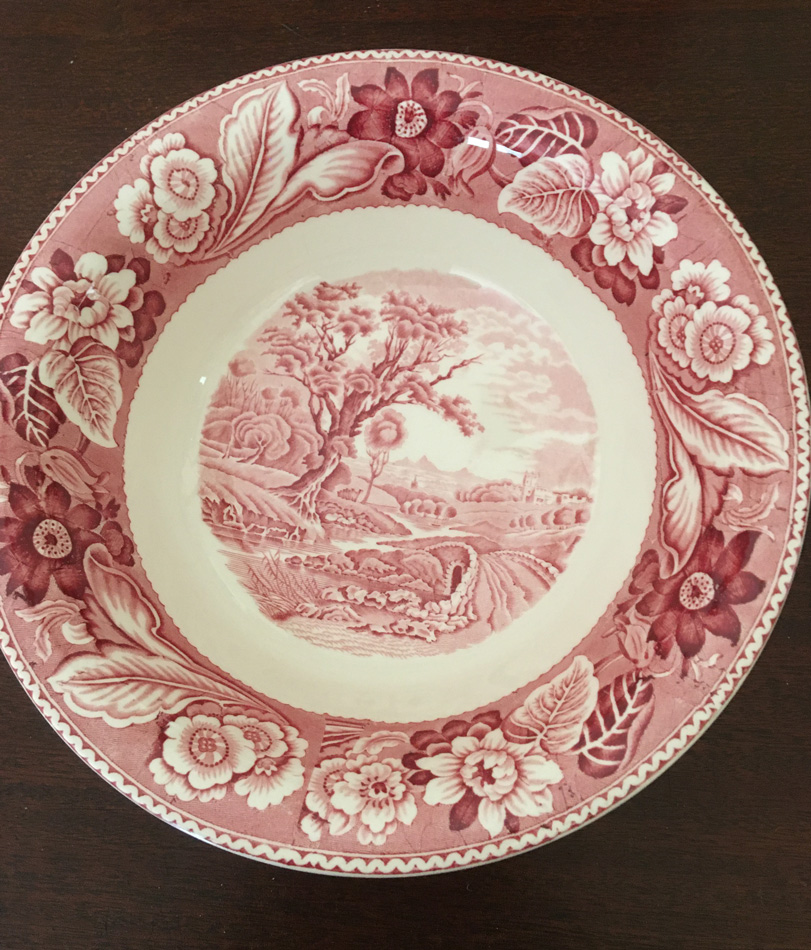
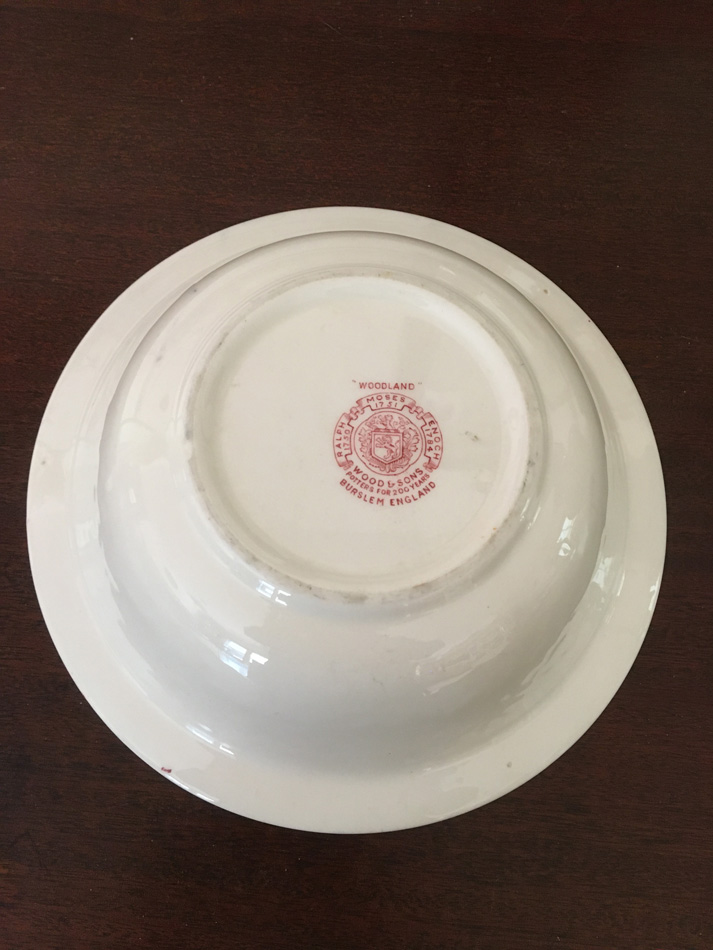
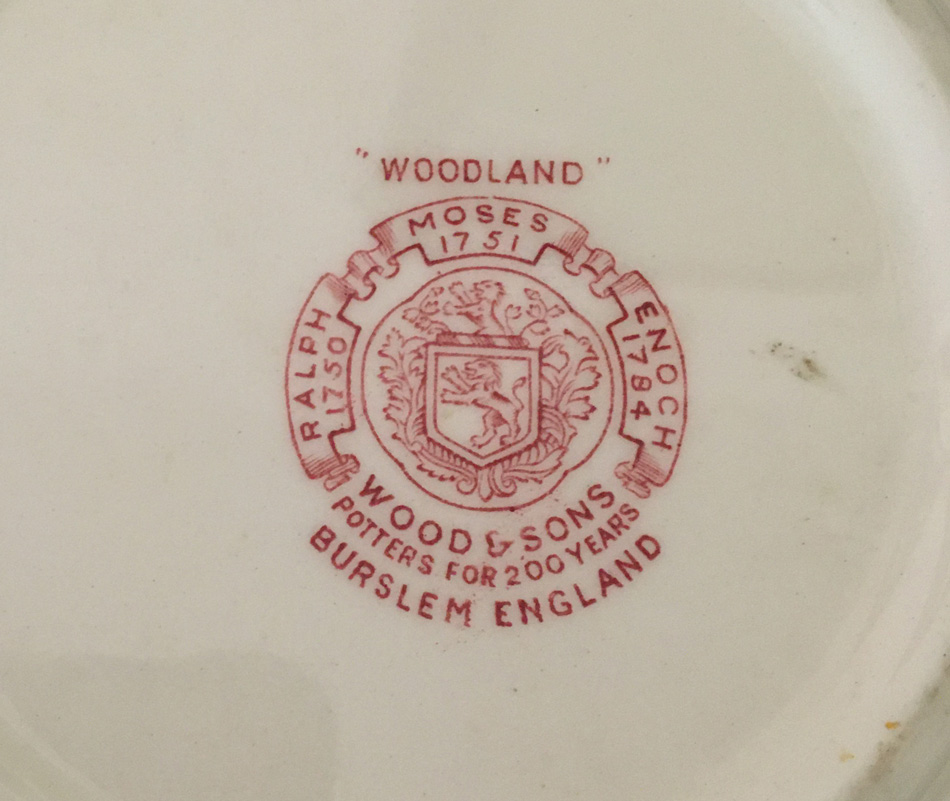
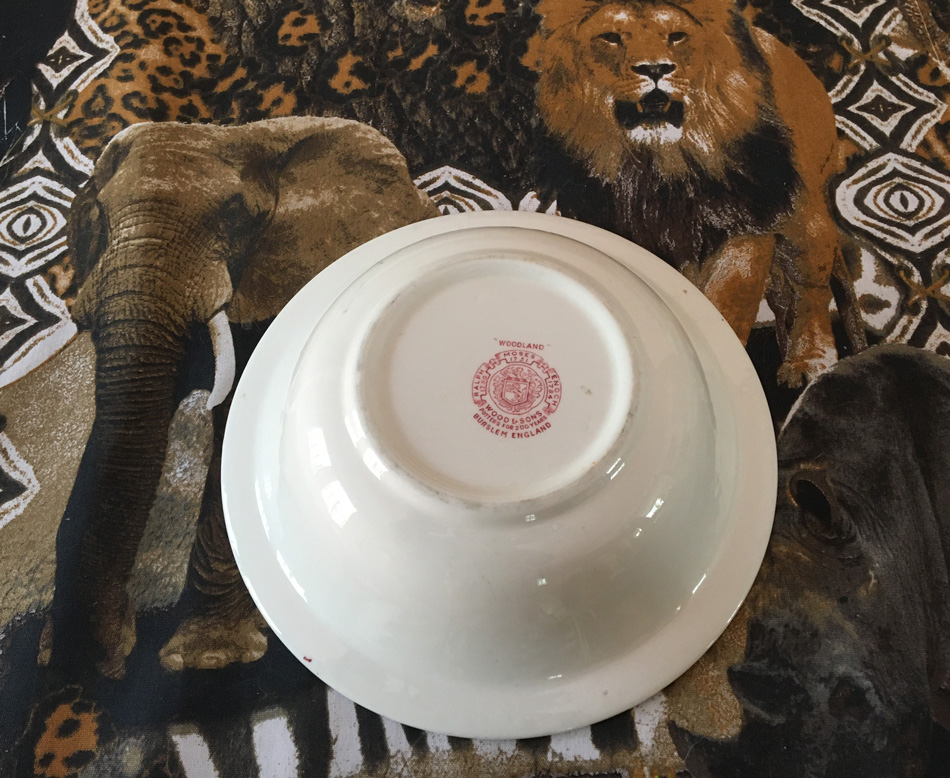
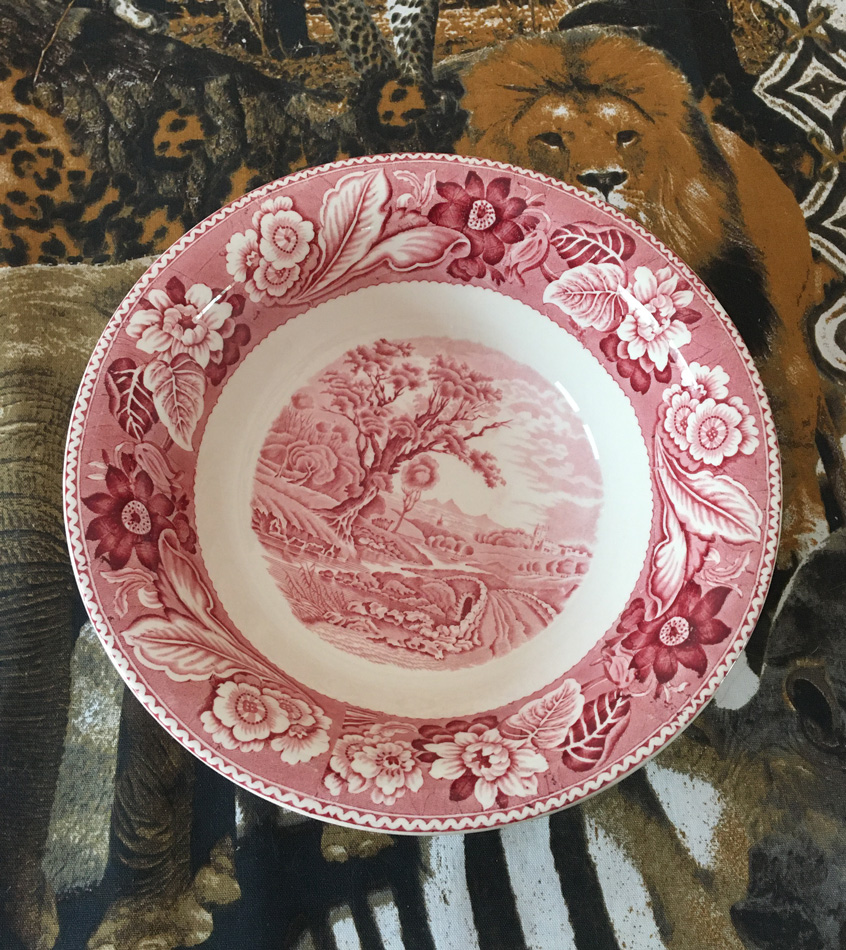

Crazing is the fine crackling one often sees on many glazed pottery pieces and on certain types of antique porcelain. Crazing is in the glaze and is not detectable when one rubs his or her fingernail over the crazing. Art pottery crazing occurs during pottery production when the clay body and glaze cool at different rates. Crazing is a very common condition with virtually all glazed art pottery. Normal crazing or crackling that can not be seen at a few feet does not typically affect the value of most very high quality art pottery pieces. This information came from an article by Harry Rinkler titled “Dating China Heirlooms”
WOOD & SONS: ENOCH WOOD’S ENGLISH SCENERY-
of Trent and New Wharf Potteries, Burslem, Stoke-on-Trent England. For well over two hundred years, the Wood family, of Burslem, (Straffordshire, England) was at the forefront of ceramic history. Early in the eighteenth century there were three brothers: Ralph, Aaron and Moses Wood. In 1715 Ralph, the eldest, was born, in 1717 Aaron, born in 1717, was the finest mould maker in the Staffordshire Potteries. He was the father of Enoch Wood, whose fame rests not only upon his great skill as a modeller, but on his ability as a practical potter-and his keenness and enthusiasm as a collector of pottery.
In 1750 Ralph Wood achieved renown with his famous, and now rare, Staffordshire figures and Toby Jugs, genuine examples of which are now 'museum pieces', but which started a vogue which has never died out.
1790 Enoch Wood was very enterprising with a flair for invention. His masterly craftsmanship served to build up the considerable business of Wood and Caldwell, a partnership which endured from 1790 to 1818.
1818 Enoch bought out his partner and his three sons joined the business. The firm then became known as Enoch Wood EL Sons and achieved a great reputation, especially in America, for which market Enoch designed an extensive range of the artistic blue and white plates.
1840 Enoch died in his eighty-third year.
Moses, the third of the three brothers, started an unbroken succession of seven generations of Master Potters, a tradition covering more than two centuries. In 1865 Absalom Wood (a descendant of Moses) became the founder and senior partner in Wood Son and Co, with his son T. F. Wood. The reason he began business at this particular time was probably because of the end of the American Civil War, with the intention to supply the American market. The original Villa Pottery factory, which has now been demolished, was at Cobridge, between Rushton Road and Elm Street, and it is thought that some 100 to 133 people were employed.
In 1877 Absalom Wood had six sons and two daughters. Two sons died in infancy, and of the four remaining sons, three of them: Thomas F. Wood, William and Henry J. Wood became master potters. In 1877, Thomas and his brother William, purchased a site in Navigation Road, which they called New Wharf Pottery, and of which they had probably been tenants since 1875. The name New Wharf was probably derived from the New Wharf that was built on the nearby canal at that time.
In 1879 The Trent Pottery, which adjoined New Wharf, was bought by Thomas F. Wood at an auction in Burslem and the Villa Pottery was transferred to the additional site.
In 1889 the site was made up by the acquisition of land purchased by the younger brother Henry J. Wood. On the 27th June, Absalom Wood died; this was also the year his eldest son Thomas was the Mayor of Burslem. In 1907 The business traded as Wood and Sons which is the trademark on these Enoch Woods English Scenery Dinner Plates as offered for auction.
In 1910 Incorporated as Wood and Sons Ltd. Thomas Wood was the principal proprietor of a firm which employed approximately 1,000 people. He had two sons - Harry and Clive; Harry became Chairman of Wood and Sons Ltd; he also learned from his father an immense knowledge of pottery skills.
In 1921 Mr. Harry F. Wood succeeded his father as chairman; under his management Wood and Sons Ltd became a large and successful earthenware manufacturer. Associated companies included H. J. Wood Ltd (at the Alexandra Pottery, Burslem), Bursley Ltd (later renamed Susie Cooper Pottery Co. Ltd, at the Crown Pottery, Burslem) and the Ellgreave Pottery Co Ltd (Ellgreave St, Burslem).
In 1929 Susie Cooper left A. E. Gray and Co, where she had been a decorator and designer, to establish an independent pottery business, first at Tunstall and then at the Chelsea Works, Burslem.
In 1929 Listed Exhibitor - British Industries Fair. Manufacturers of Semi-Porcelain and White Granite Dinner, Tea and Fancy Ware for all markets. Speciality: Vitrified Ware for Hotels, Steamships, Institutions, etc. (Stand No. F.7)
In 1931 The Stanley Pottery, was purchased by Woods, it comprised two factories - the Stanley Pottery and the Crown Pottery.
1931 at Harry Wood’s invitation, Susie Cooper moved her design and decorating studio to Wood and Sons's Crown Works in Newcastle St, Burslem, where she operated as the Susie Cooper Pottery. The Susie Cooper earthenware produced between the early 1930s and 1964 includes wall masks, figures, art pottery and decorator items but best known are the collectable tableware decorated using freehand painting, banding, sgraffito, lithography, and aerography.
Wood and Sons Ltd and its subsidiaries produced a vast array of well designed, good quality earthenware for the middle market. The company produced mainly teaware, tableware, fancy earthenware and hotel ware. Ivorine China, a semi-porcelain body, was produced in the 1930s and from the 1940s 'Beryl Ware' — tableware in a green coloured body — was popular. Trade names included 'Wood’s Ware', 'Bursley Ware', 'Woods Ivory Ware' and 'Ivorine China'
In 1947 Advert in British Industries Fair Catalogue as Exhibiting Member of the British Pottery Manufacturers' Federation of Federation House, Stoke-on-Trent, Staffordshire. Composite Exhibit. (Pottery and Glassware Section - Olympia, Ground Floor, Stand No. 1217)
In 1954 The business became a public company under the style Wood and Sons (Holdings) Ltd.
In 1950s Wood and Sons prospered until the early '50s, survived the difficulties during the early '60s, and continued to grow until 1979 when a major recession started.
In the 1950s/60s The company employed 1,000 people.
In 1959 Susie Cooper purchased the Crown Works as a base for her expanding business. From c.1950 Susie Cooper’s focus was on bone china and the last earthenware pattern was registered in July 1964.
In 1966 Acquired by Wedgwood.
The Crown Works remained the base for Susie Cooper’s design studio until the Works were closed by Wedgwood in 1980.
In 1981 Administrative Receiver was appointed. The business was sold to members of the Yorke family (some of whom were Board members of the failed company).
In 1982 The company was acquired by the Yorke family, with Edmund Yorke heading the operation as Managing Director. He then became Chairman of the Company. After a period of sustained growth in the UK, servicing accounts such as the National Health Service, and in the domestic area selling corporate designs to major UK retailers such as British Home Stores and Boots, a planned development of the export market began.
This information came from an article titled “GRACES GUIDE UK” and the British Industrial Fair pg 185 1929.
I will accept PAYPAL and other Ebay payment methods. Items will be shipped Priority Mail next day after payment of Paypal, packaging and mail $14.95.